What is gyoza?
Originating in mainland China, gyoza was introduced to Japan around 400 years ago, and has since evolved in its own unique way.
The dumplings are made by wrapping a filling of meat and vegetables in a flour-based dough.
In mainland China, boiled dumplings are popular, while in some areas like Taiwan, pan-fried dumplings are consumed.
In Japan, the word gyoza often refers to pan-fried dumplings (yaki-gyoza).
Of course, gyoza is also consumed in Japan as boiled dumplings (sui-gyoza) or in soup.
There are two particular differences between Chinese dumplings and Japanese dumplings.
First, in Mainland China, people eat gyoza instead of rice, whereas in Japan, gyoza is eaten as a side dish with rice.
Second, while Chinese cabbage is commonly used for the filling in China, cabbage is often used in Japan.
Japanese dumplings use a filling with intense flavor, making them a perfect snack with alcoholic beverages.
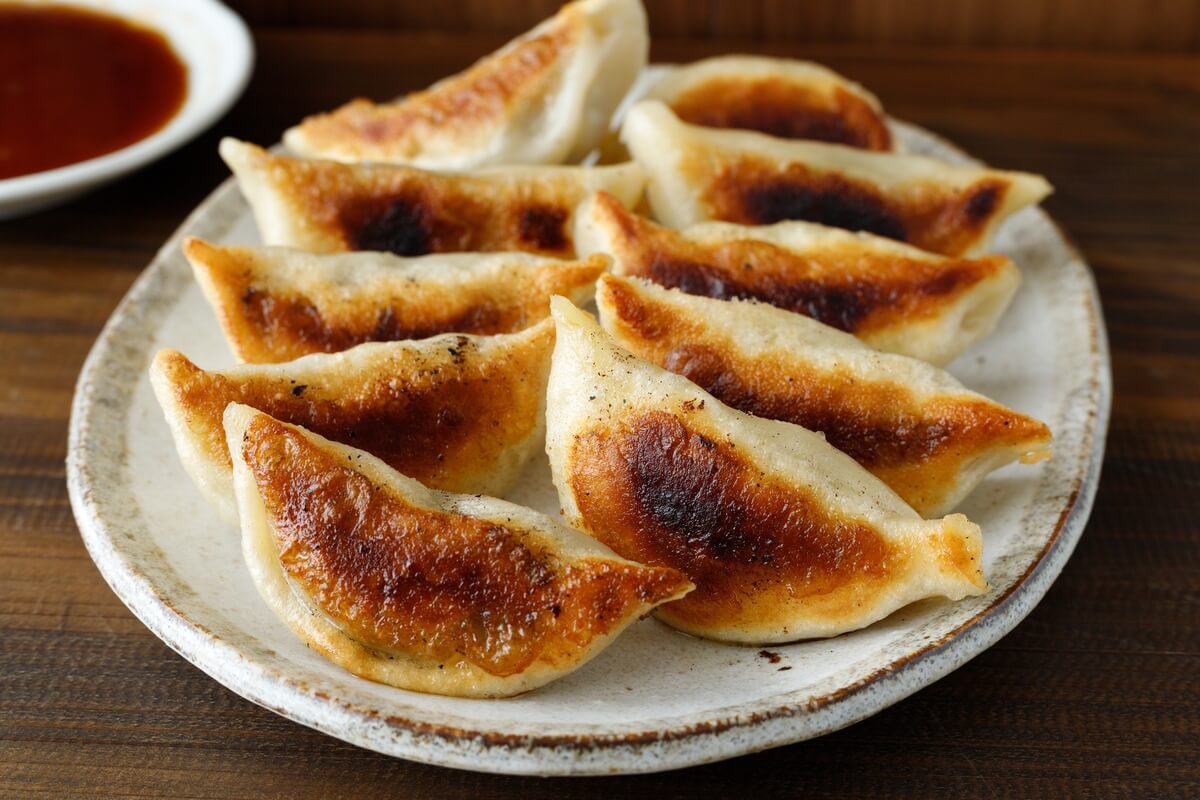
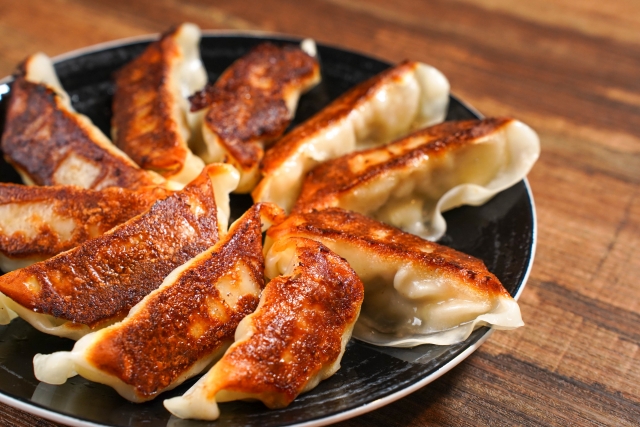
The History of Gyoza and How It Differs from Chinese Dumplings
Gyoza originally comes from China and has a history that dates back to ancient times, even before the Common Era. In China, dumplings were traditionally eaten in the cold winter months as a warming food, often considered a type of medicinal cuisine. Especially during celebratory events like the Lunar New Year, it is customary for families to gather and wrap dumplings together—a uniquely Chinese tradition.
Gyoza became widely known in Japan after World War II. Japanese soldiers and civilians who returned from China brought back dumpling recipes they had encountered during their time abroad. These were gradually adapted to suit Japanese tastes and food culture, eventually giving rise to a unique Japanese-style gyoza.
There are several key differences between Chinese dumplings and Japanese gyoza. First, in terms of seasoning, Chinese dumplings are usually prepared to bring out the natural flavors of the ingredients and often contain little or no garlic. In contrast, Japanese gyoza tends to feature bold flavors with plenty of garlic and ginger, catering to local preferences.
The thickness of the wrapper is also different. Chinese dumpling wrappers are generally thicker and have a chewy texture. On the other hand, Japanese gyoza typically uses thinner wrappers, which result in a crispy finish when pan-fried.
There are also notable differences in how they are eaten. In China, dumplings are most commonly boiled and enjoyed as shuǐjiǎo (water dumplings), often served as a main dish without rice. Meanwhile, in Japan, pan-fried gyoza are the standard. They are typically served as a side dish alongside white rice, often as part of a set meal.
Why Pan-Fried Gyoza Became the Norm in Japan
While boiled dumplings are the standard in China, in Japan, pan-fried gyoza are by far the most popular. This can be attributed to several cultural and historical factors.
First, pan-fried gyoza are easy to make at home. Unlike boiled dumplings, which require more preparation, gyoza can be cooked to a crispy, savory finish using just a single frying pan. This simplicity made them ideal as a home-cooked dish and helped them become a staple of Japanese households.
Second, the Japanese style of eating usually involves combining rice with flavorful side dishes. Heavily seasoned pan-fried gyoza pair exceptionally well with white rice, making them a natural fit for set meals known as “gyoza teishoku,” commonly found in restaurants across Japan.
Moreover, after World War II, ramen shops and Chinese-style eateries became more common, and pan-fried gyoza became a standard side dish. With their crispy exterior and juicy filling, gyoza also pair perfectly with beer or other alcoholic drinks, leading to their popularity at izakaya and casual dining establishments.
In this way, Japan’s unique food culture and lifestyle helped promote the popularity of pan-fried gyoza. Today, when people think of gyoza in Japan, the image of the crispy, pan-fried variety is the one that most commonly comes to mind.
Varieties of gyoza
You will find several types of gyoza in Japan.
The following explains gyoza from the traditional ones to the more unique variations.
Yaki-gyoza (pan-fried dumplings)
This is the most common type of gyoza in Japan.
It is cooked on one side in a frying pan, then water is added and steamed.
The dough is crispy with a juicy inside.
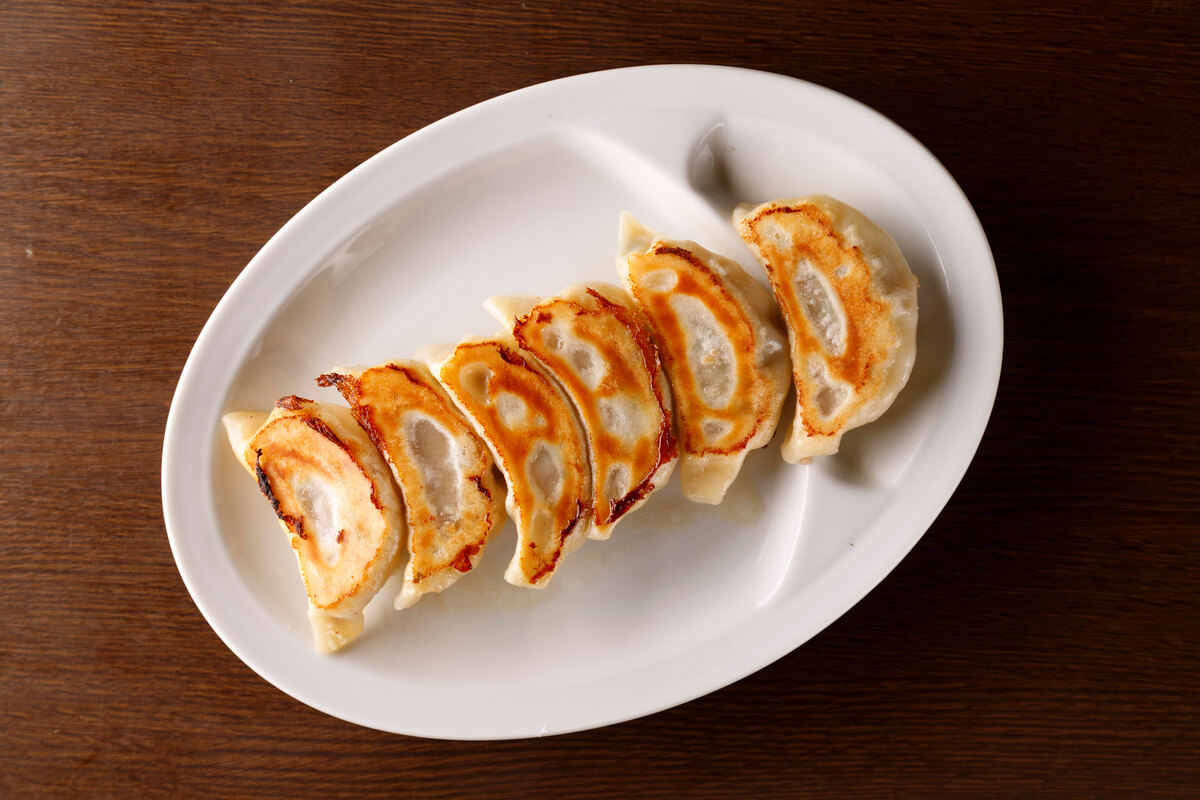
Sui-gyoza (boiled dumplings)
They are made by boiling dumplings in boiling water.
The dough is soft and the ingredients inside have a gentle flavor.
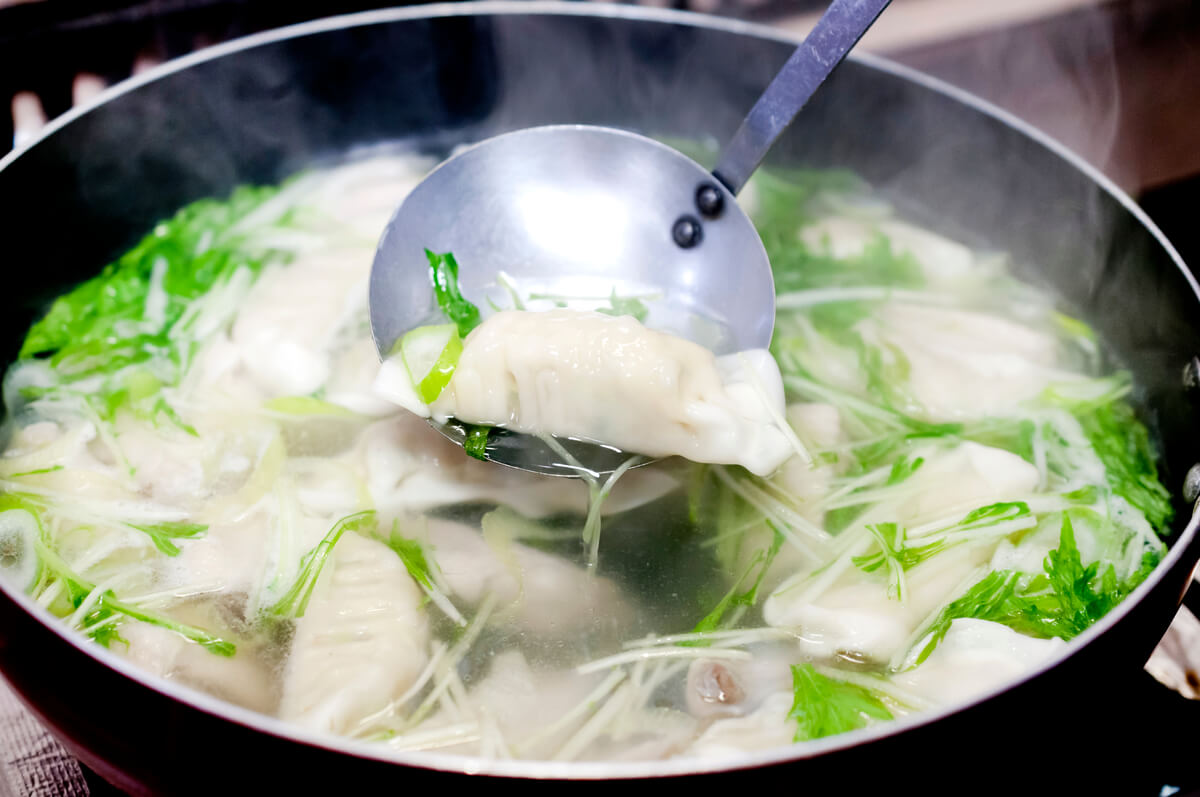
Age-gyoza (deep-fried dumplings)
This type of gyoza is prepared by frying the dumplings in oil.
The outside is crispy, with the inside being juicy.
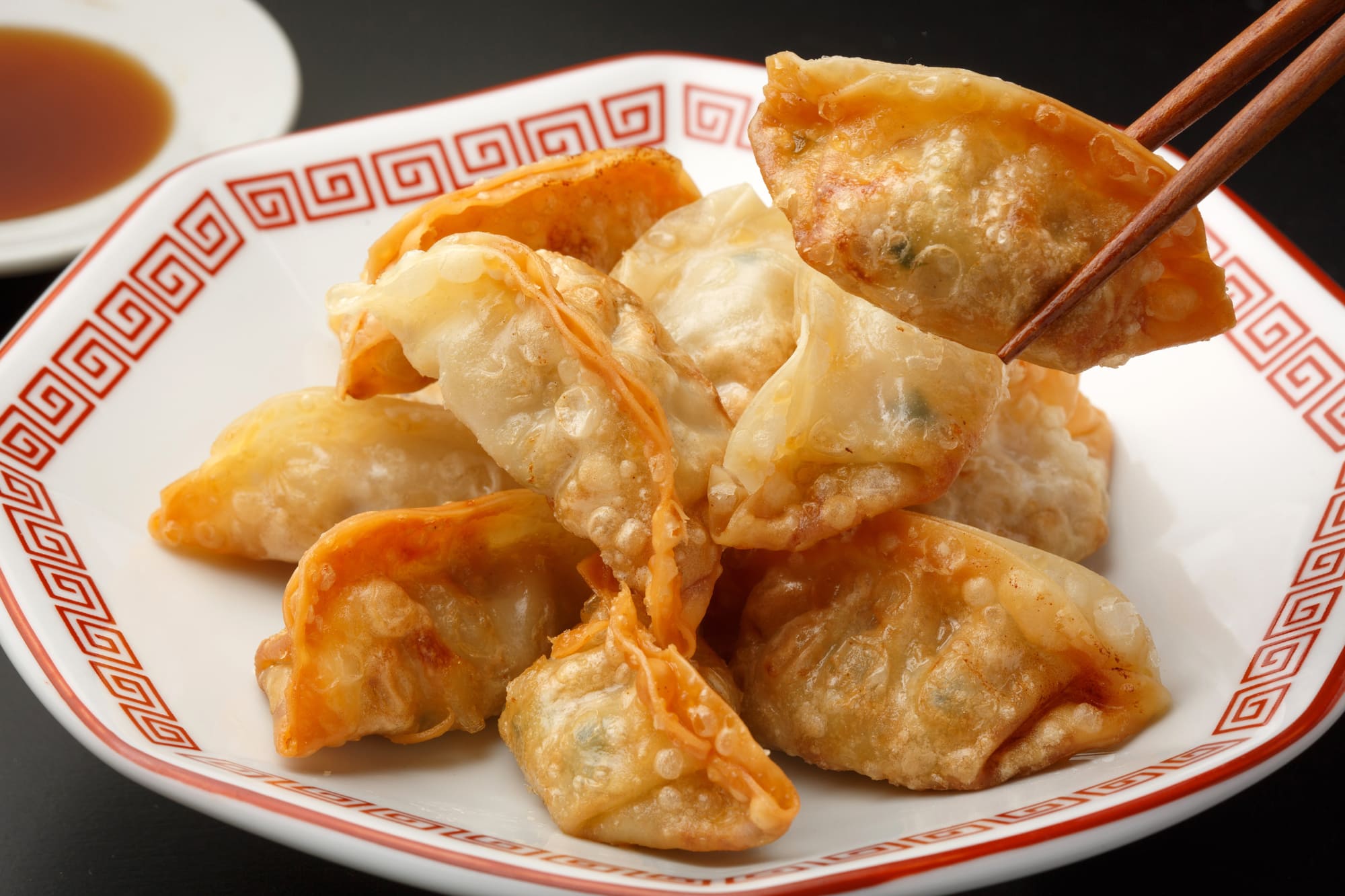
Mushi-gyoza (steamed dumplings)
This is made by steaming the dumplings using a steamer.
The dough is chewy and the rich flavors of the ingredients are brought out well.
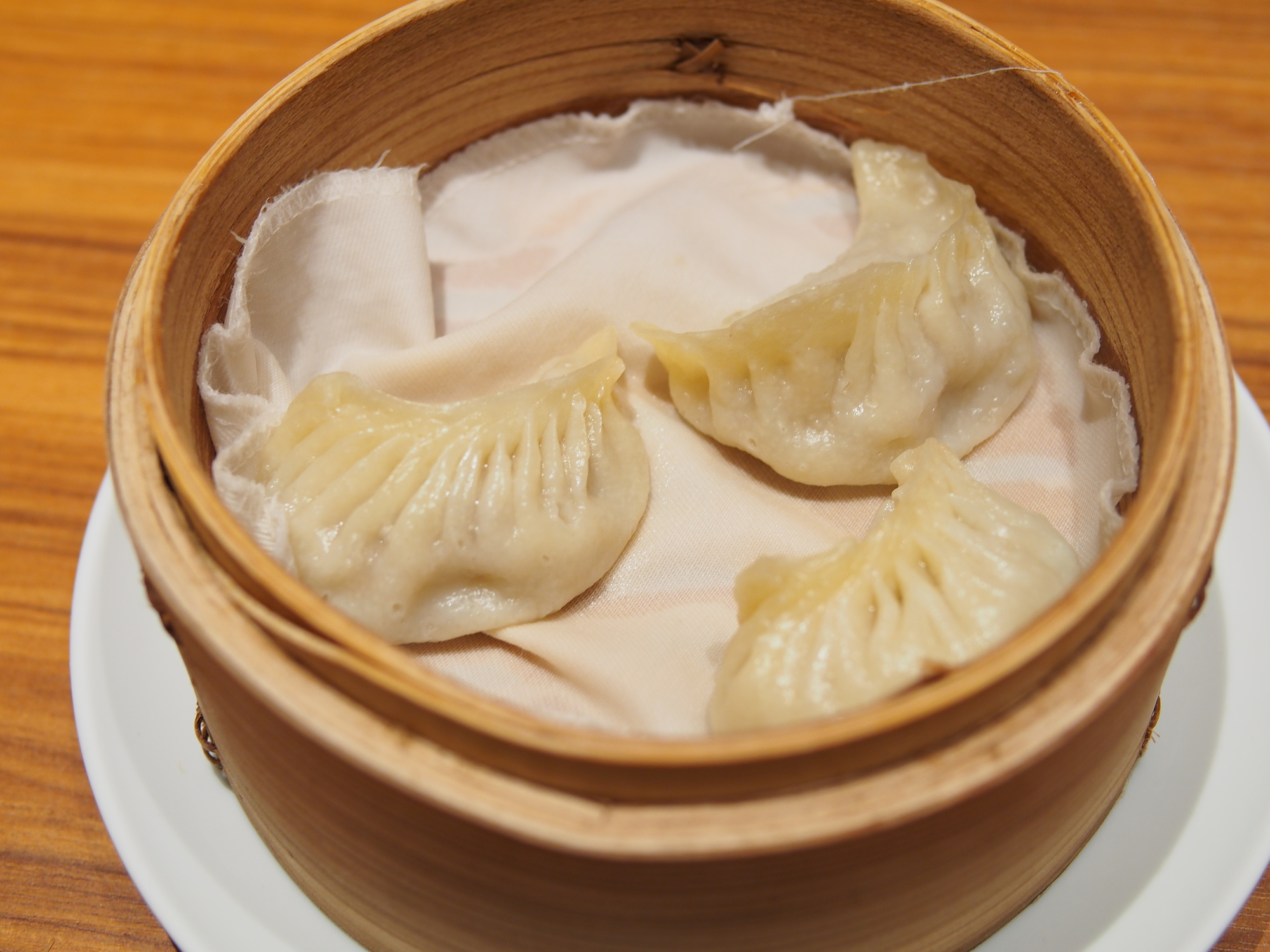
Cheese fondue gyoza (cheese fondue dumplings)
A new type of dumplings that have emerged in recent years.
The dumplings are dipped into cheese just like cheese fondue.
How to make gyoza
The following explains how to make the classic Japanese dish of yaki-gyoza.
First, prepare the filling.
Choose fresh ingredients such as pork, cabbage, chives, ginger, and garlic, finely chop them.
Season with soy sauce, sesame oil, salt, pepper, and sake in moderation.
Make sure to thoroughly mix with the ingredients.
Let the filling sit for some time to settle and enhance the flavors.
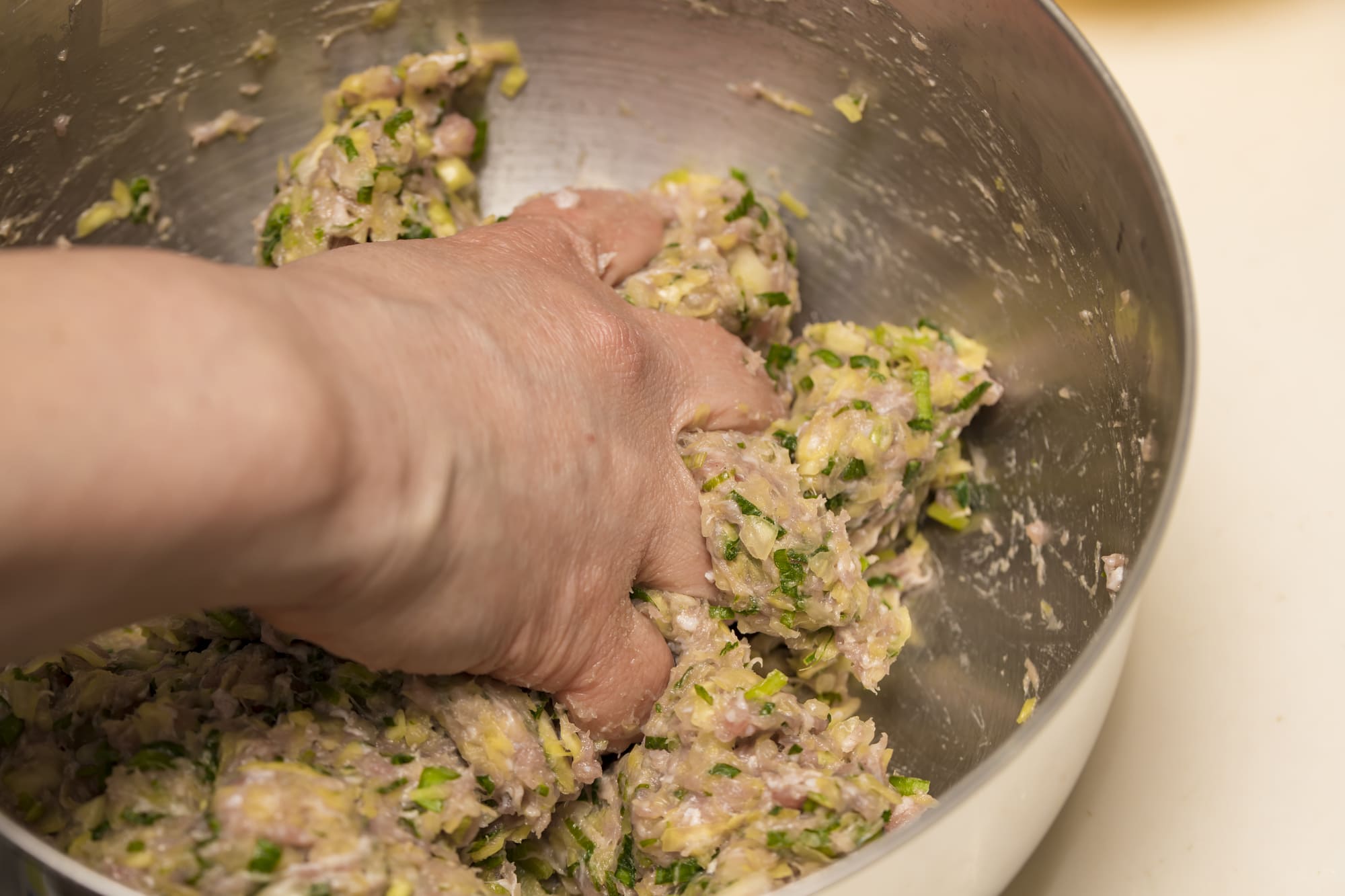
Prepare the dough.
Combine flour, water, and salt to make a homemade dough.
Stretch the dough to an even thickness.
This step requires skill and experience to ensure the dumplings fry evenly.
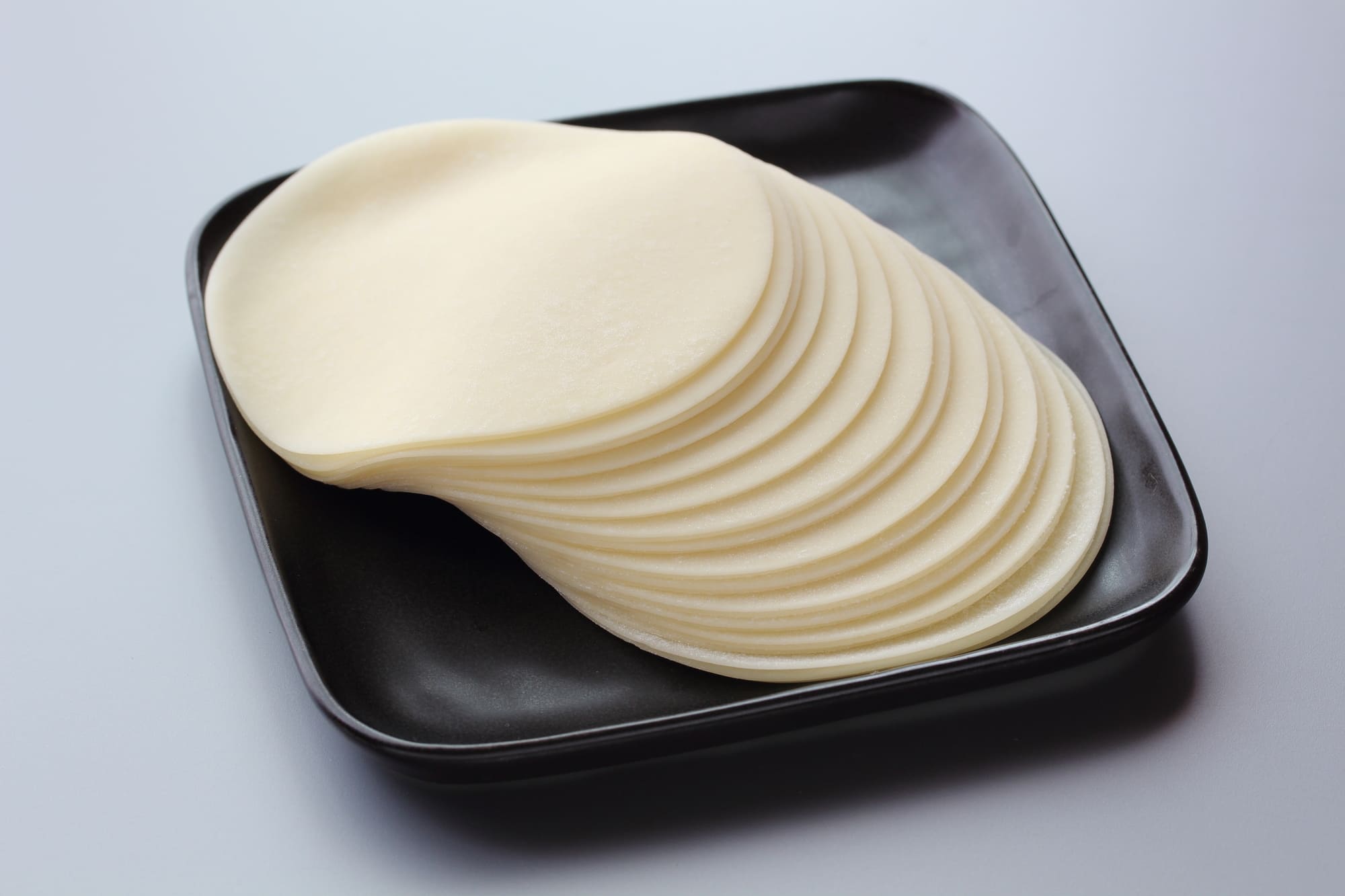
Wrap the filling in the dough.
Make sure each dumpling has an even amount of filling and is wrapped in folds.
Shaping dumplings beautifully requires skill.
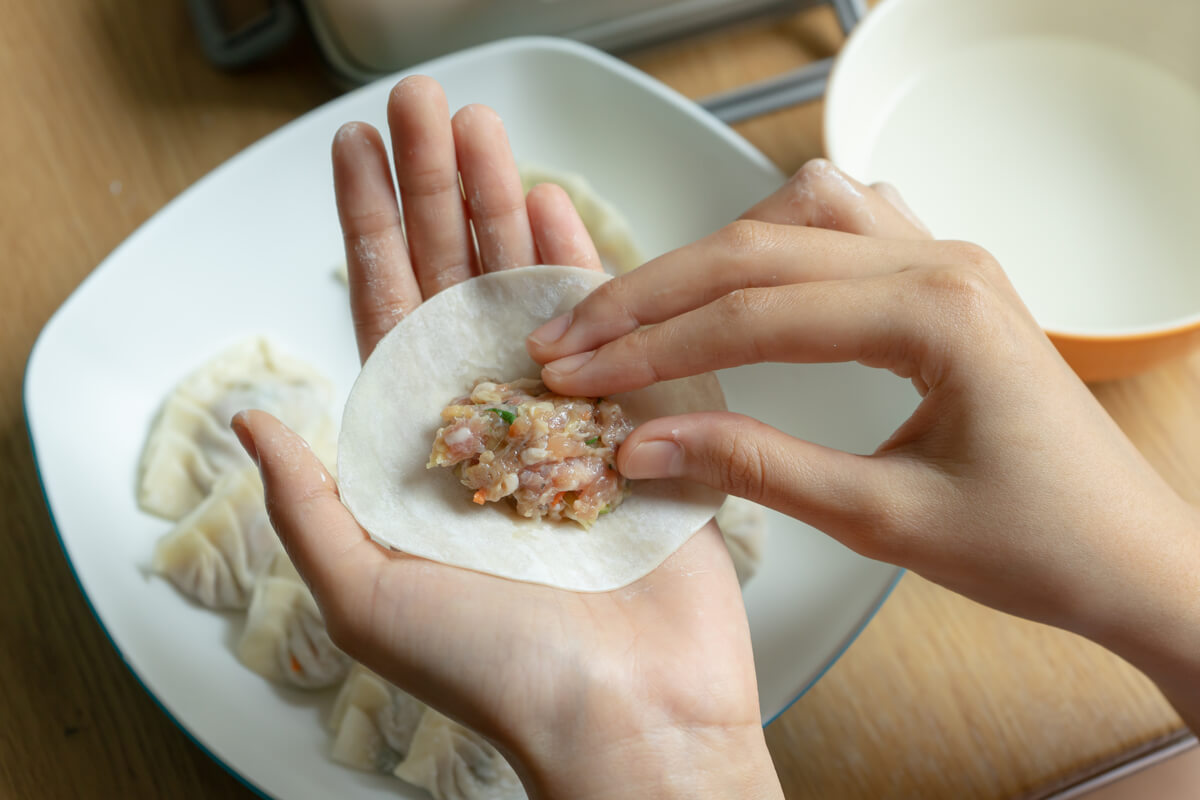
Fry the dumplings.
Place them on a hot pan and cook until the skin is crispy and the filling is juicy.
It is important to control the temperature of the pan and baking time to get them perfect.
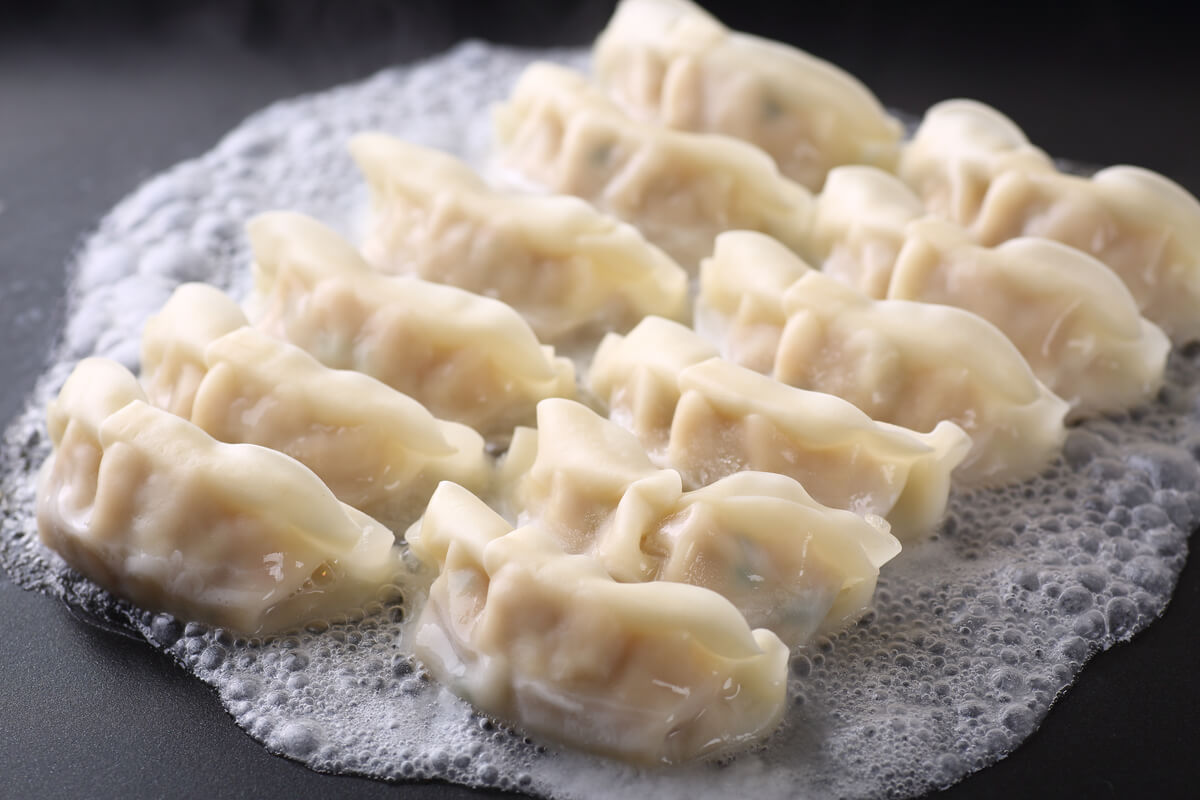
How to eat gyoza
Prepare sauce
Prepare the sauce used for dipping the dumplings.
For a classic sauce, combine soy sauce, vinegar, and chili oil in a small dish.
Adjust the amount of vinegar and rayu (chilli oil) to preference.
Some regions and stores may add sesame oil and grated garlic to the sauce.
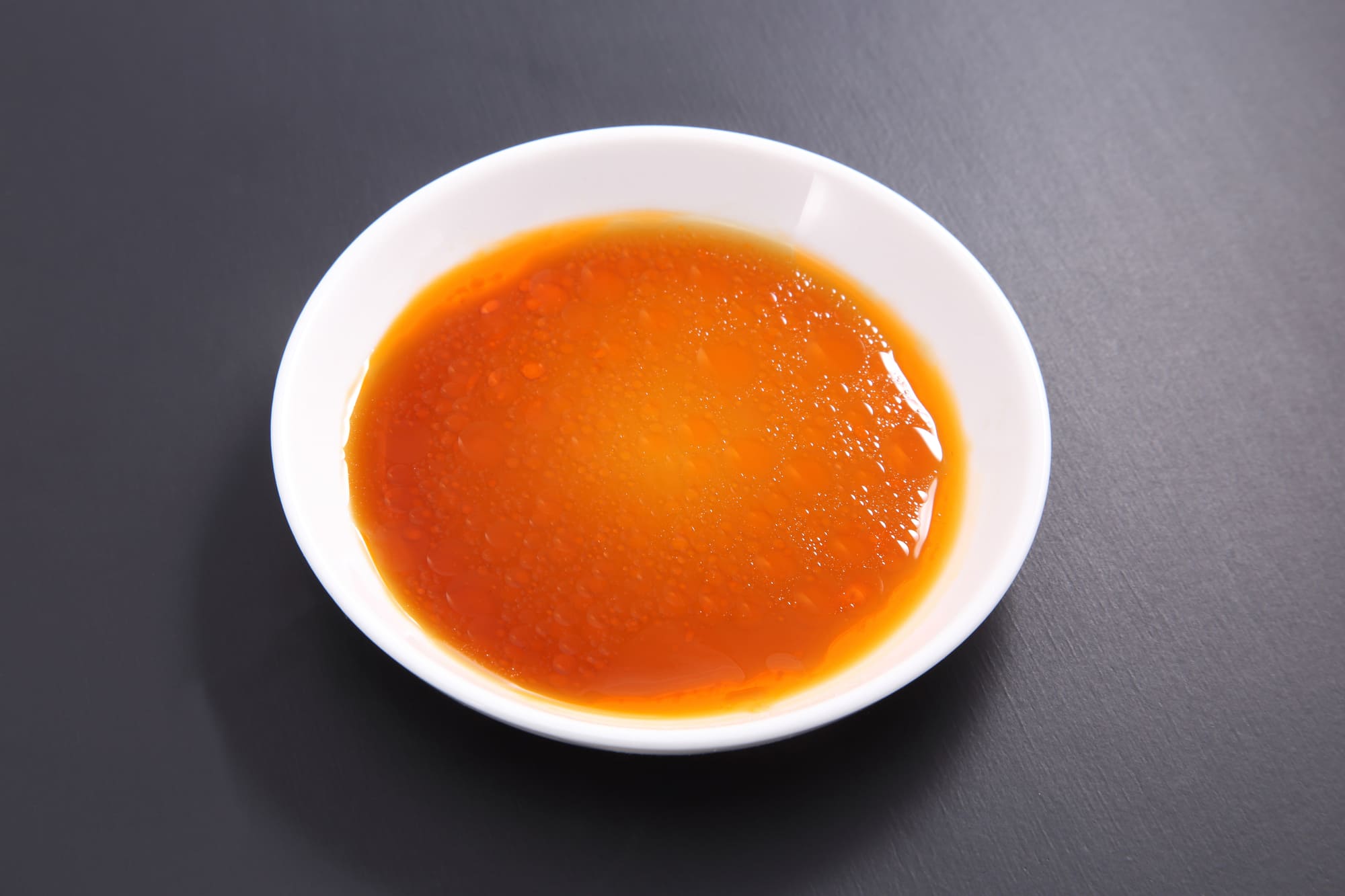
Dip dumplings in sauce
Dip the dumplings in the sauce.
Dip the fried part of the dough down into the sauce.
This ensures that the sauce directly touches the filling and combines the flavors well.
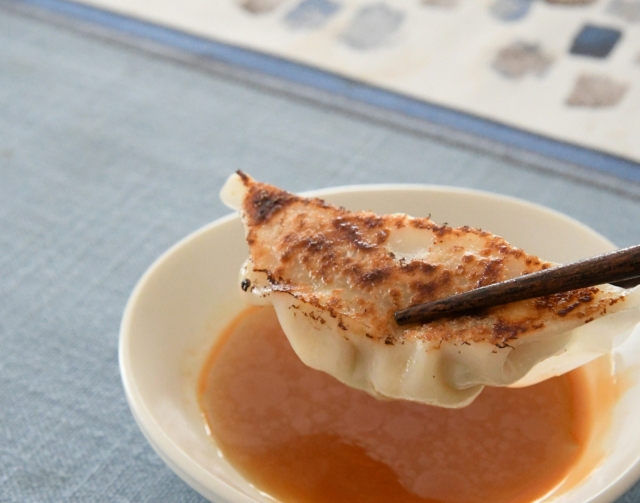
Eat
Dumplings are best enjoyed hot.
Freshly fried dumplings are ideal to savor the crispy dough and juicy filling.
Many people eat a whole dumpling in one bite; however, you can divide it into two if it's too big.
People’s reaction when eating
Search Restaurants by Destination

Search Restaurants by Popular Cuisines





